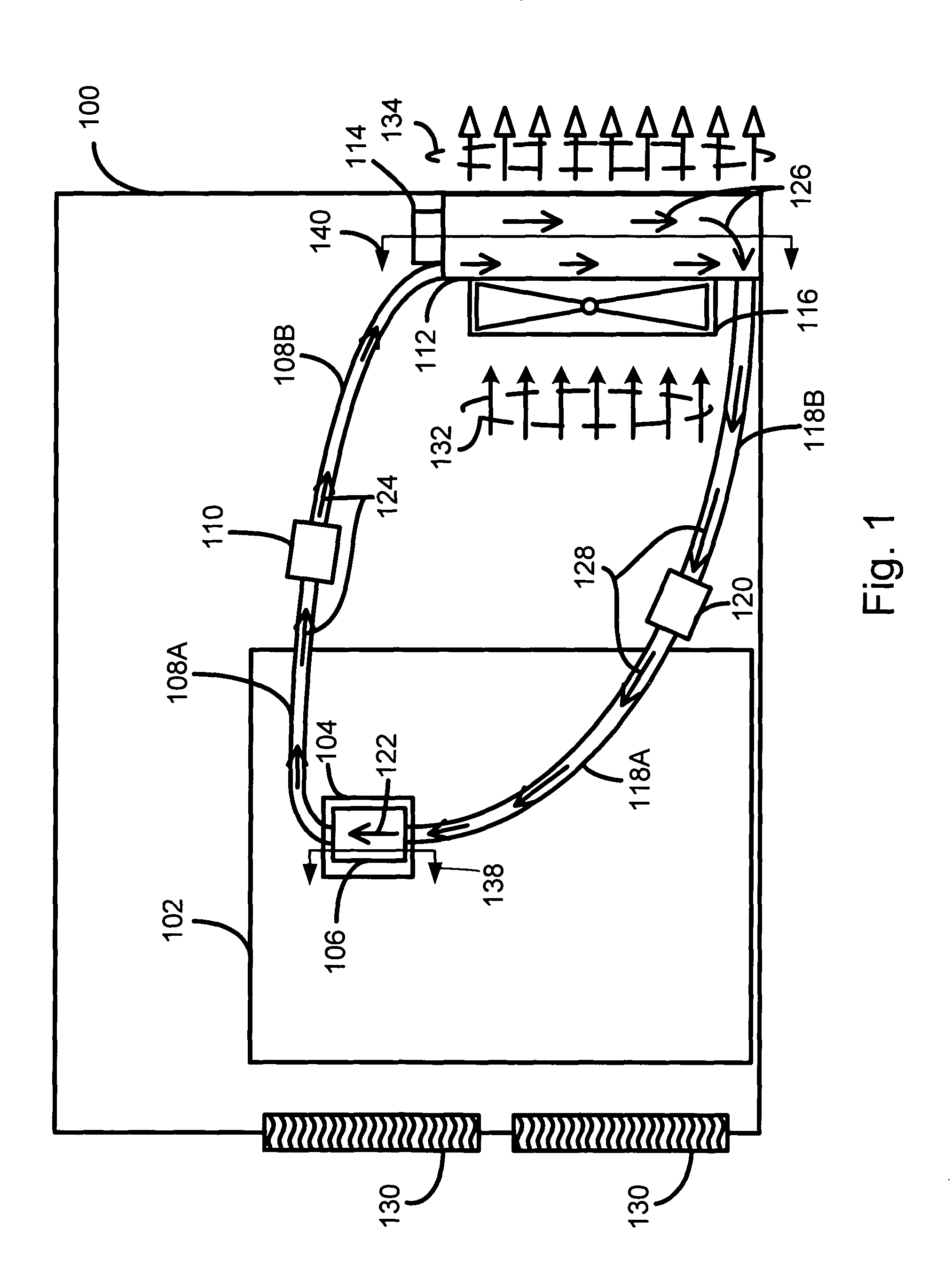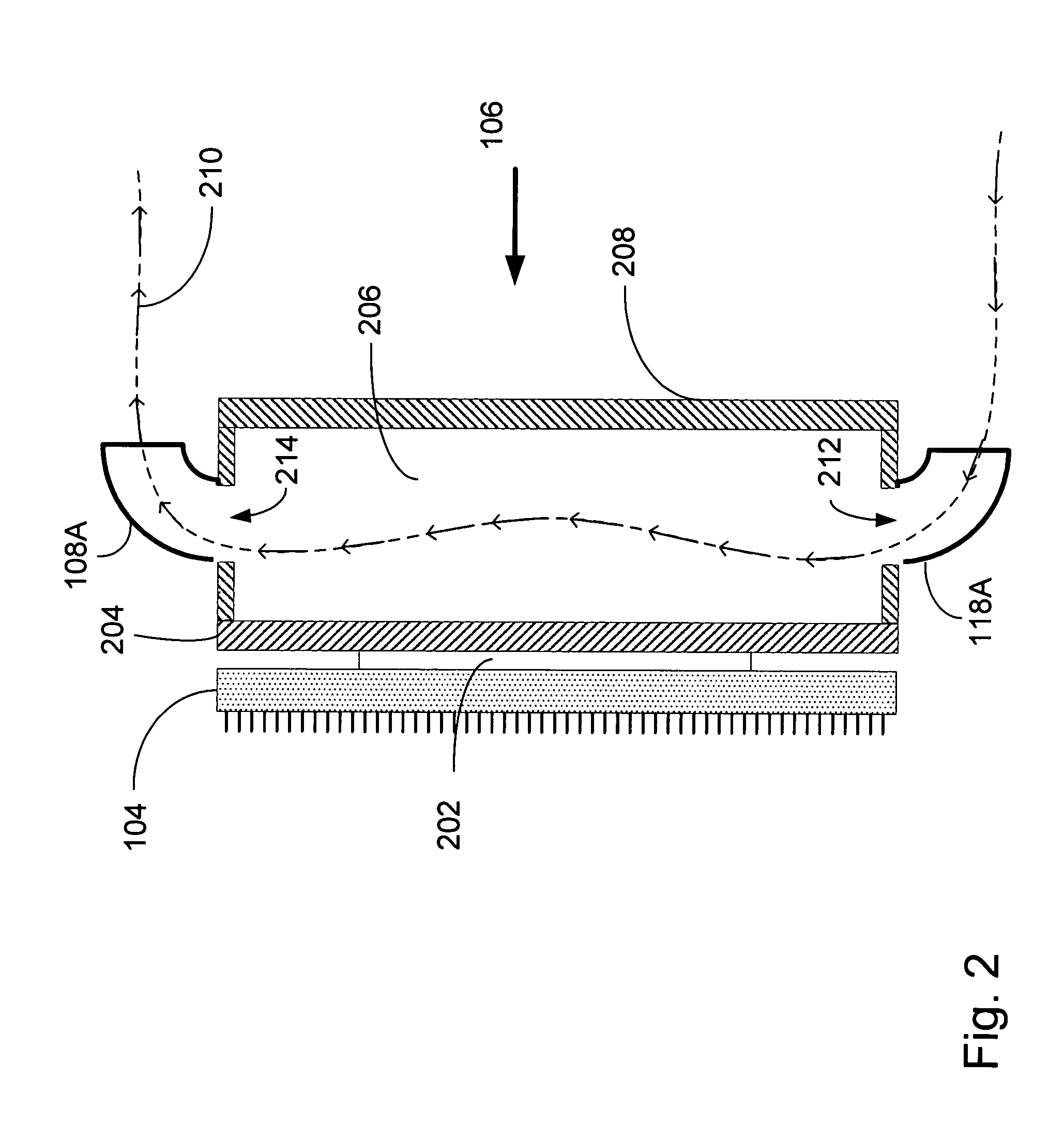Liquid cooling system
a cooling system and liquid cooling technology, applied in indirect heat exchangers, lighting and heating apparatus, instruments, etc., can solve the problems of increasing heat dissipation, liquid circulating within the system, and dissipating heat without power, and achieve the effect of convenient manufactur
- Summary
- Abstract
- Description
- Claims
- Application Information
AI Technical Summary
Benefits of technology
Problems solved by technology
Method used
Image
Examples
Embodiment Construction
[0037]While the present invention is described herein with reference to illustrative embodiments for particular applications, it should be understood that the invention is not limited thereto. Those having ordinary skill in the art and access to the teachings provided herein will recognize additional modifications, applications, and embodiments within the scope thereof and additional fields in which the present invention would be of significant utility.
[0038]In one embodiment of the present invention, a two-piece liquid cooling system is presented. The two-piece liquid cooling system includes: (1) a heat transfer unit, which is capable of attachment to a processor, and (2) a heat exchange unit. In one embodiment, a single conduit is used to couple the heat transfer unit to the heat exchange unit. In a second embodiment, an input conduit transporting heated liquid and an output conduit transporting cooled liquid are used to couple the heat transfer unit to the heat exchange unit. It ...
PUM
 Login to View More
Login to View More Abstract
Description
Claims
Application Information
 Login to View More
Login to View More - R&D
- Intellectual Property
- Life Sciences
- Materials
- Tech Scout
- Unparalleled Data Quality
- Higher Quality Content
- 60% Fewer Hallucinations
Browse by: Latest US Patents, China's latest patents, Technical Efficacy Thesaurus, Application Domain, Technology Topic, Popular Technical Reports.
© 2025 PatSnap. All rights reserved.Legal|Privacy policy|Modern Slavery Act Transparency Statement|Sitemap|About US| Contact US: help@patsnap.com



